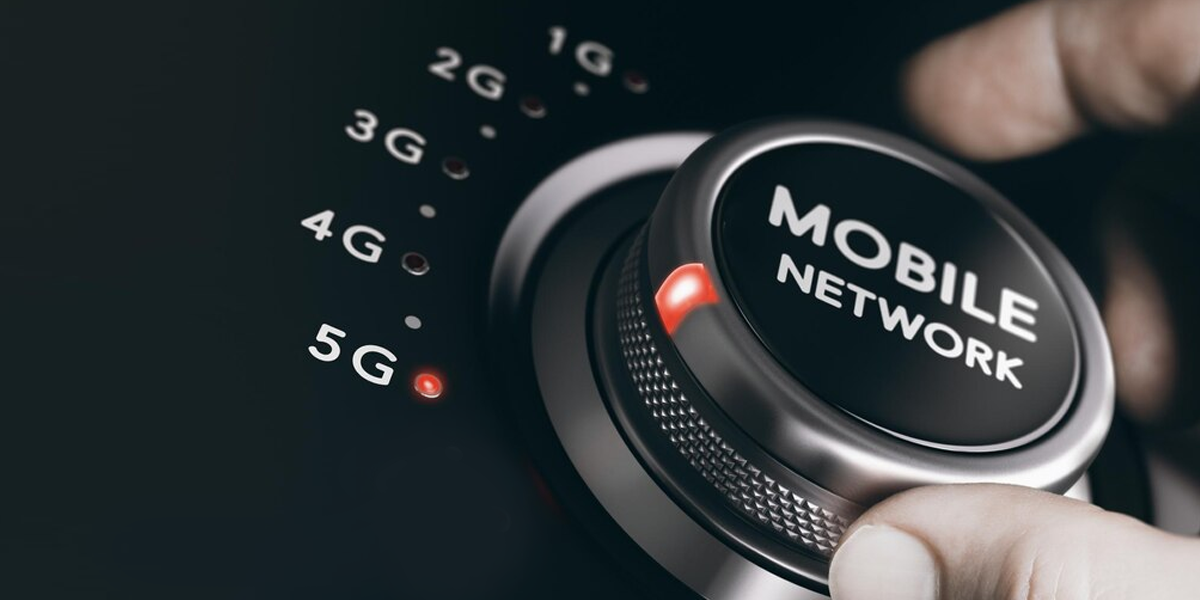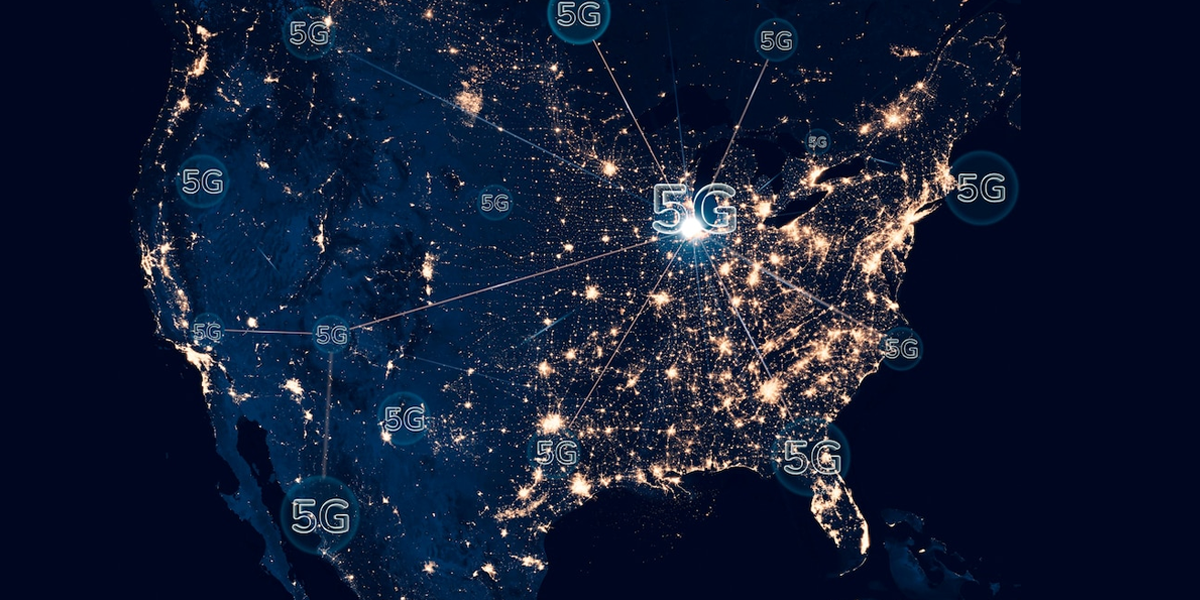According to recent government reports, the 5G rollout will start in India in the major cities. The Ministry of Telecom has announced a phase-out of the 5G rollout in 13 cities. 5G technology is part of the fourth phase of the Industrial Revolution.
Even during the Independence Day speech, PM Narendra Modi announced that India’s Techade is here with the, 5G. This technology becomes important for India’s Digital Revolution and the idea of Digital India which needs to reach grassroots levels and every village should be connected digitally.
The auction for 5G spectrum was held in August where the major telecom members like Jio, Airtel and Vodafone, and Adani Data Networks Limited, have also auctioned for this. A total of 51.2 GHz was auctioned were major bidder was Jio digital.
Reliance Jio is the highest bidder followed by Bharati Airtel and Vodafone, with a total bid up to 1.5lakh crores. Reliance Jio which emerged as the highest bidder spent around Rs 88,000 crore, acquiring half of the airwaves in the 700MHz band and acquiring a total of 24.7 GHz in 700 MHz, 800 MHz, 1800 MHz, 3300MHz.
The second highest bidder Bharati Airtel spent around Rs 43,084 crores and acquires a total of 19.8 GH of the spectrum. And Vodafone is the third bidder where they spent Rs 18,799 crores by acquiring a total of 6,228MHz.
The global scenario is already faster than India, where major economies like the USA has launched this technology in 2020. Currently, commercial 5G technology deployed worldwide is approximately 12% i.e; around a 1.1billion mobile connections.
What is 5G technology?

5G is the next-generation cellular technology that provides faster and more reliable communication with ultra-low latency. 5G wireless can be transmitted through a large number of small cell stations located on the roofs of buildings.
In the 5G network, the geographical areas are divided into small regions called cells. This small cell will enable them to have low latency and higher download speed up to 10 gigabits per second.
The standards are according to International Telecommunication Union IMT 2020, which requires a theoretical peak of speed pto 20 gigabits per sec
Also Read: 5G India 2022 6th International Press Conference
5G speed network ranges from 2 to 20 gigabits per second(Gbps). This is in contrast with the 4G technology where the speed range from 6 to 7 megabits per second(Mbps). The 5G network being faster than existing networks can connect more different devices, improving the quality of Internet services in crowded areas.
The standards for the usage of 5G are defined and driven by 3GPP ( 3rd Generation Partnership Project).
The 5G technology will increase the tariffs as the deployment and manufacturing costs will increase with the establishment of the new towers and other manufacturing costs. The prices may increase up to Rs 225 – 250 in the next 1 to 2 years.
The Different Band Widths Of 5G
5G works mainly with 3 bandwidths and these are,
- Low band spectrum
- Medium band spectrum
- High band spectrum
Low band spectrum:- In this bandwidth, the maximum speed is around 100Mbps
Medium band spectrum:- In this bandwidth, the speed is higher compared to the low band spectrum, and the coverage levels are minimum and penetration of signals too.
High band spectrum:- In this bandwidth, the speed is highest compared to the other two bands but with a limited coverage area.
Each band spectrum has its uses, the low band spectrum – is used by telecom companies for mobile communications and cell tower connections, and the middle band spectrum- is used in industries and other specialized factory units. And the high band spectrum is used for IoT(internet of things) and technology in infrastructure.
The Millimeter-wave band is another band that is a portion of the radio frequency spectrum that spans 24 to 100 GHz. This spectrum has short wavelengths and short latencies with higher speed.
Among the band spectrum, Sub 6-GHz is the most common and this can deliver a speed range between 10 and 10000 Mbps which will further reach than mmWave band.
Network Generations from 1G to 5G

1G – In the 1980s came the frist generation mobile networks with simple and specific feature of voice call using analog signals.
2G – In the 1990s came 2G which started using digital radio signals which supported both voice and data transmission with a speed of arkund 64 bits per second.
3G – In 2000s, 3G technology was introduced with a data speed of around 2 millibits per second and the capacity to transmit the telephone signals, video calls and conferencing.
4G – The present generation LTE technology with a speed from 100Mbps to 1Gbps which helps us in acquring all the media and entertainment things and the data transfers and many other features.
5G – The future generation which was introduced in 2018 and is in the developng proccess is available with higher speed and faster data proccesing and in the evolution of new technologies like Internet of Things, Cloud Computing and Edge Computing, etc.
5G Technology In India
The 1st research for 5G started in 2019 with the Trai white paper – Enabling 5g in India, and later on the Making India 5G Ready, 5G Hackathon, and TSDSI’S. 5g Radio Interface Technology in 2020.
Indigenous 5G technology
Indigenous 5G technology is one of the three technologies approved by the International Telecommunication Union. In India, it has been designed by IIT Chennai, IIT Hyderabad, and the Centre of Excellence in Wireless Technology.
Indigenous 5G operates on the Large Cell Low Mobility(LCLM) principle. It supports higher cell coverage (up to 12 km area range) which serves the requirement of rural areas.
Benefits of LCLM
- Increase in speed of internet in rural areas
- Increases the distance between two base stations
- Reduces the Capex Cost

Cities where the 5G rollout was announced In India
Thursday, Telecom Minister Ashwini Vaishnaw announced the phase-out of 5G technology in 13 cities of India. These 13 cities include Delhi, Mumbai, Bengaluru, Ahmedabad, Chandigarh, Chennai, Gandhinagar, Gurugram, Hyderabad, Jamnagar, Kolkata, Lucknow, and Pune.
5G technology roll out all over India may take around 2 years i.e., 2023 to 2024 which requires fiber infrastructure. The rollout this time is not available to every citizen in the city and the current mobile technology needs to be developed to be compatible with the 5G.
According to reports, the rollout by 2023-2024 may reach around 1000 towns and cities across India. Further, the rollout to Tier I and Tier II cities may take a few more months after the phased rollout to major cities.
Major Initiatives Taken By India for 5G technology
In 2017, the BharatNet project was launched which aims at providing digital infrastructure with broadband connectivity for every household.
National Optical Fibre Network aims at bringing a broadband revolution to rural areas.
India’s National Digital Communications Policy 2018 aims at the convergence of a cluster of revolutionary technologies including 5G technology, cloud computing, Internet of Things, etc. This will introduce a customer-focused and application-driven policy for the Indian Telecom sector.
High-Level 5G India 2020 forum which aims at the early deployment of 5G in India.
The 5G club D10 – includes the G7 countries and Australia, India, and South Korea, where the group aims to create alternative suppliers of 5G equipment and others within the 10 member states.
Difference Between 4G and 5G network
There is a lot of speed, latency, and range difference between 4G and 5G technology.
4G network
- It uses low frequencies of 700 to 2500MHz
- Supports less number of devices.
- Speed is comparatively low
- Gets interrupted due to signal disturbances
5G network
- Faster speed range
- Ultra-low latency
- Highest frequency up to 28GHz
- Real-time data is available at a faster rate
- Can support many devices at a time
Advantages of 5G network

It is a big platform for enabling the Fourth Industrial Revolution with devices like cloud computing, big data, artificial intelligence, the internet of things, edge computing, etc.
It helps in increasing the efficiency of the industries and factories with its smart technology and helps in smart technology related to infrastructure and agriculture.
Increases mobile connectivity and also increases the efficiency of communication.
It’s can be a backbone to many emerging technologies with a large range of applications in self-driving vehicles, automated machines, telesurgery, etc.
It is a major growth driver of the global economy with 1.31 dollars of global economic output and creating $22.8 million in new jobs. An increase in research and technology increases the demand for infrastructure and increases job opportunities.
Helps in virtual reality development, and gaming becomes immersive in the future.
In agriculture, it helps in precision agriculture like the use of GPS, smart RDIF sensors, and other technologies with advanced technologies which help in doubling the income of farmers.
It also helps in mobile banking, and healthcare and enables the exponential growth of the country.
It helps in the development of smart cities with public transport, public utility monitors, security systems, and other dedicated connectivity.
Helps in wireless communications with low latency and increased speed.
Technologically sound to support heterogeneous services and possible in uniform connections with less buffering and uninterrupted connectivity across the world.
Helps in improving the tech platforms and increases the education levels with a smart way of learning.
They help in Digital beamforming which involves sending the data across multiple streams. And analog beamforming shaping involves shaping the radiowaves to point in a specific direction. 5G improves the system capacity for both beam forms.
The 5G technology helps in converging the Wi-Fi and Cellular data but in a limited way.
Sharing of data in hospitals like the patient’s records and other records becomes easier and processing of the data also becomes faster
Disadvantages of 5G technology

The initial costs are an ighroloutrolloutt process and this can increase the per-user charges as it requires high maintenance charges for high-speed networks.
Coverage areas are low and availability to rural areas becomes difficult due to its low range and short wavelengths and bandwidths. And only available metro cities and other tier I and tier II cities also require time for their availability.
As the connectivity speed is high, it drains out the battery from the mobile phones and this reduces the efficiency of the mobile.
Changing the devices from compatible to 5g compatible costs much not only for the companies but also for the customers and this increases electronic waste which harms the environment.
The infrastructure like cell towers of the older connections needs to be removed and replaced with a new one which costs the government a lot more than the earnings.
Signal disruption can make one lose connectivity and this affects the work or operations which are being carried out.
The above disadvantages can be changed by following measures
Increasing the efficiency of infrastructure and capacity building by deploying proper cost-benefit ratios and analyzing the market mechanisms.
The government needs to provide incentives sector-wise which can increase usage throughout the country and improve the economy of the country.
Making the technology accessible to rural areas can reduce disparities among the rural and urban regions.
The spectrum auction pricing needs to be in a balanced way where the bidders can come forward as in the recent auction bidders were not able to attract them.
The spectrum used by 5G networks will hinder the weather forecasting signals which can cause disasters worldwide. And also affects the remote sensing of the Earth Observation Satellites.
It affects the aviation sector which depends on radar signals and this disrupts airway travel.
It may affect the satellites with C-Band stations as the frequency band is between 3.3-3.6 GHz
5G network may help in developing digital twins of a real object like the aircraft turbine etc
Global scenario
In the global scenario, many other countries have already deployed 5g technology. The countries like South Korea, the USA, the UK, and other European Countries have been ahead of India in deploying 5G technology.
South Korea a leading technology-wise developed country is the 1st to with deal with 5G networking working in 2018 and is expected to increase its penetration by 2025 to 60%. Despite South Korea being the 1st country to deploy a 5G network, China has the maximum number of cities with 5G availability, and next stands the USA.
In 2020 a report was published stating the number of cities with 5G availability in 61 countries and 1336 cities across the world. Some estimates show that by 2025 the 5G technology connections may reach roughly 3.6 billion and may reach up to 4.4 billion by 2027.
The top ten nations with 5G technology availability are China, the USA, South Korea, the UK, Spain, Canada, Australia, Saudi Arabia, Italy, France, Thailand, and Sweden. And in terms of speed, the top nations are South Korea, Taiwan, UAE, Australia, and Japan being in the top 5.
This shows that the availability of 5G needs to be rolled out to many other developing and underdeveloped countries which help in global economic growth.
